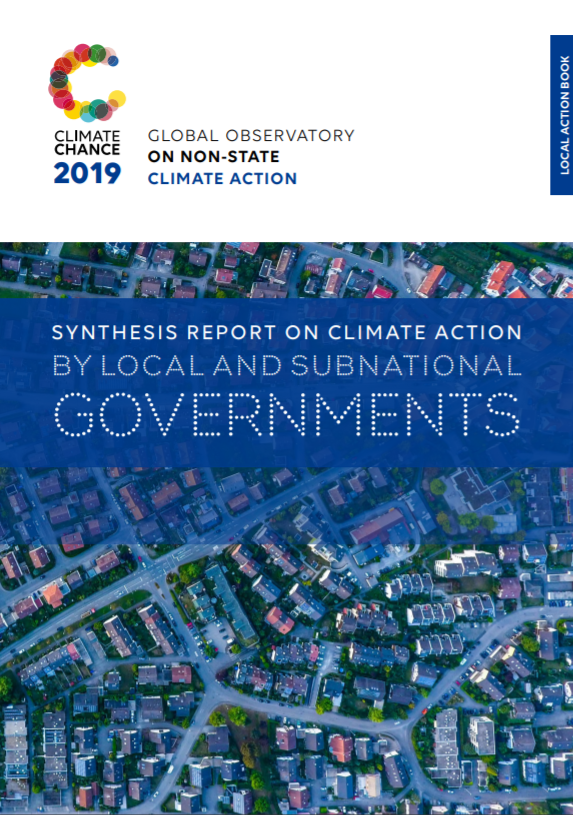
As part of the Covenant of Mayors in Europe, 300 new monitoring plans were issued in 2019 by European cities, reaching a total of 2,850. These plans allow the monitoring of the implementation of climate plans submitted by the signatories of the Covenant; however, the aggregation of these new data is not available yet. The 124 regions that reported their data to the CDP between 2015 and 2019 under the Under2 Coalition initiative show an average reduction of 14.2% of GHG emissions, +3,500 initiatives implemented and represent 670 million inhabitants. Several regions around the world are performing better: the State of Mexico -22%; South Australia -20%; or Attica -25%. For cities, the CDP data make it possible to assess the evolution of their emissions on a caseby-case basis. We have identified 10 cities encouraging trajectories thanks to the last 4 years of city reporting: Stockholm -30%; London -23%; Madrid -10%; Cape Town -7% etc. Finally, 4 new cities in the C40 network were able to show that they had reached their peak emissions by providing the data needed to establish a continuous decline over 10 years. At the same time, the C40 has calculated that consumption of 79 cities in its network amounted to 3.5 GtCO2 e, 60% more than city-wide emissions (2.2 GtCO2 e), meaning that two-thirds of their emissions are due to imports.
The launch of many Regional Covenants did not achieve a similar pace of accession as those observed at the launch of the European Covenant of Mayors. Nevertheless, the initiative is progressing on all continents, with 1,411 signatory cities (600 million inhabitants) outside the cities of the EU and Western Europe, including 172 cities in Sub-Saharan Africa (112 million inhabitants). A similar finding on the part of the regions: the pace of new regions joining the Under2 Coalition and the RegionsAdapt initiative and reporting their emissions slowed down (+4 in 2019, against 10 in 2018 and nearly 50 in 2017) but are progressing in Latin America and Africa. As for RegionsAdapt, the initiative has acquired a new member in 2018. The dynamism of cities and regions in Latin America is particularly notable. 343 cities (298 million inhabitants) committed themselves to the Global Covenant of Mayors and handed over 60 additional inventories in 2018. The Latin American regions published 12 new inventories in 2018, the largest increase between continents.
Adherence to international initiatives does not necessarily reflect the activity of cities and regions in countries, subject to national obligations, or benefiting from national tools and mechanisms. For example, of the 1,700 communities in the Philippines that are required by national legislation to formulate a local action plan, more than 1,000 have fulfilled their obligation now, but few of them report on international platforms. Similarly, in Korea, in 2015, 210 out of 240 cities had already submitted their Local Agenda 21 for Sustainable Development, which had been required by law since 2008. In many of these countries, international initiatives of cities come to support existing actors and their tools, through workshops or the dissemination of good practices.
On the regions’ side, the RegionsAdapt initiative now has 71 members. In 2018, 38 reported their data on risks and vulnerabilities to climate change, but also 165 adaptation actions, mostly on risk monitoring, awareness and planning. Half of them now have an adaptation plan. On the city side, the signatories of the various Covenants of Mayors have reported a total of 238 adaptation plans since their launch, most of which come from North America (31). ICLEI’s 2018 analysis of more than 1,000 cities on the carbonn Climate Registry provides insight into the state of play of cities in implementing adaptation strategies: only 21% of communities have started a process of strategy formulation, and 9% have reached the stage of implementation. 70% of the adaptation actions are financed by communities’ own funds, illustrating the additional potential of action that could be implemented thanks to more external funds. For an in-depth analysis of the adaptation actions implemented by the communities, go through the “Adaptation Book” which draws up a 2019 assessment of adaptation actions.
These studies stress the importance of socio-economic and health co-benefits, to show that these gains are well above the additional cost of low-carbon solutions. Some even try to quantify these gains: Climate Opportunity: More Jobs; Better Health estimates that building renovations, bus networks and district heating and cooling together can reduce carbon emissions significantly (1,242 MtCO2 ), create 13.7 million jobs, and avoid 300,000 premature pollution-related deaths. Other examples also show that climate and development are mutually supportive. “Driving Climate Action: State Leadership in India” concludes that the 10 best-performing Indian federal states in terms of climate action (emissions per person, renewable rate, forest cover) are also those with the best socio-economic indicators (revenues by residents, access to essential services)
13 new case studies of cities and regions (Section II) illustrate how the alignment of local public policies to implement adaptation and mitigation objectives allows significant results in terms of GHG emissions, energy consumption but also forest cover, modal shifts, or the ability to collaborate with local stakeholders and citizens.


